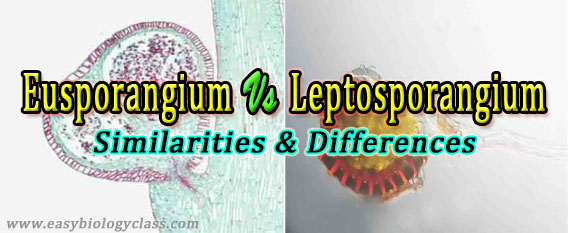Eusporangia vs Leptosporangia Sporangia are the specialized spore producing structures found in plants. In Pteridophytes, two types of sporangia are present. The two types of sporangia are (1) Eusporangium and (2) Leptosporangium. This classification is proposed by Goebel in 1881 based on the developmental pattern of sporangia. The spores produced […]
Continue ReadingCategory Archives: Botany
Pteridophytes: General Characteristics (With PPT)
Pteridophytes are plants with Feather like Leaves Pteridophytes are a group of primitive land plants belongs to the Cryptogams. They are the first evolved plant group with vascular tissue system for the conduction of water and food materials. Due to the presence of vascular tissue, they are called as Vascular […]
Continue ReadingDifference between Bryophytes and Pteridophytes
Bryophytes vs Pteridophytes Bryophytes are most primitive land plants predominantly grow in moist and shaded places. Bryophytes are known as the Amphibians of Plant Kingdom since water is essential for the completion of their life cycle. The Bryophytes includes three groups of plants such as Liverworts, Hornworts and Mosses. The […]
Continue ReadingHydrosere (Hydrarch Succession) with PPT
What is Hydrosere or Hydrarch Succession? A succession originates in a water body (aquatic environment) is called Hydrosere or Hydrarch Succession. Such a succession does not necessarily lead to the development of a land community. If the water body is sufficiently large and with wave action, the succession usually results […]
Continue ReadingRoot Stem Transitions in Plants with PPT
Root Stem Transition: Root and stem form a continuous structure in plants called the axis. The vascular tissue in root is radial (xylem and phloem arranged separately in different radii) whereas in the stem is conjoint (xylem and phloem are arranged together in same radii as vascular bundles). Thus, there […]
Continue Reading



